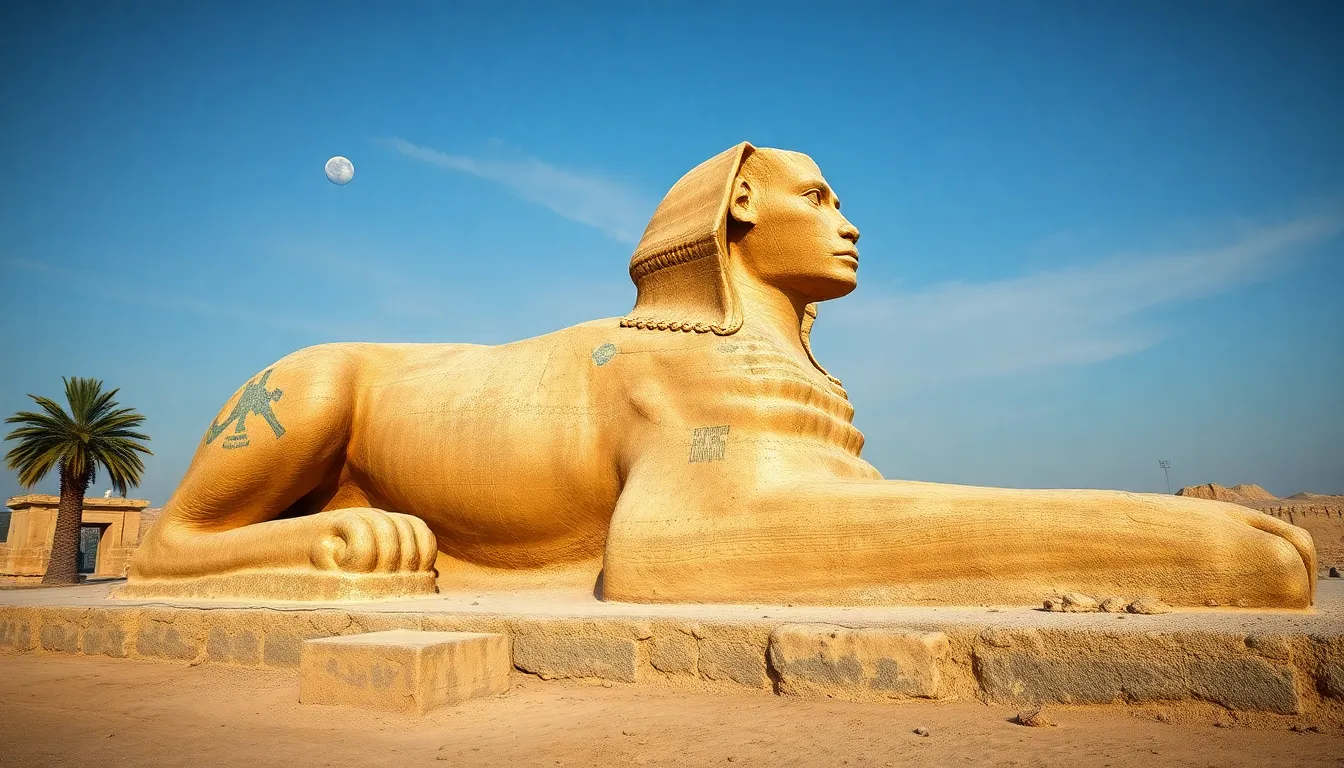The Sphinx in Historical Texts: What Ancient Writers Said
I. Introduction
The Sphinx, a magnificent creature with the body of a lion and the head of a human, stands as one of the most iconic symbols of ancient Egypt. Its grandeur and enigmatic presence have captivated the imaginations of countless generations, making it a significant figure in both historical and mythological narratives. The Sphinx not only served as a guardian of sacred spaces but also embodied profound philosophical and spiritual concepts in ancient Egyptian culture.
This article aims to explore ancient writings about the Sphinx, delving into the perspectives of various historical figures and the interpretations that have shaped our understanding of this fascinating creature.
II. The Sphinx in Ancient Egyptian Literature
The Sphinx appears prominently in ancient Egyptian literature, particularly in the Pyramid Texts and Coffin Texts. These texts, inscribed in the tombs of pharaohs, reveal much about the cultural significance of the Sphinx.
- Pyramid Texts: These religious texts date back to the Old Kingdom and often reference the Sphinx in the context of the afterlife and the divine protection it offers to the pharaohs. The Sphinx is seen as a guardian, ensuring safe passage to the afterlife.
- Coffin Texts: These texts expand on the themes of the Pyramid Texts and often depict the Sphinx as a powerful symbol of resurrection and transformation, reinforcing its role in the spiritual journey of the deceased.
In Egyptian mythology, the Sphinx symbolizes strength, wisdom, and protection. It represents the duality of human intellect and animalistic power, embodying the balance that was essential for maintaining order in the universe.
III. Herodotus and His Accounts
The Greek historian Herodotus, often referred to as the “Father of History,” provided one of the earliest detailed accounts of the Sphinx in his work, “Histories.” His observations not only documented the physical appearance of the Sphinx but also its significance within Egyptian culture.
Herodotus described the Sphinx as a monumental figure located near the pyramids, emphasizing its massive size and the mystery surrounding its creation. He speculated about its origins and the purpose behind its construction, suggesting that it was built to honor the pharaohs.
In Herodotus’s view, the Sphinx served as a symbol of knowledge and wisdom, a reminder of the pharaoh’s divine right to rule and the importance of the afterlife in Egyptian belief systems.
IV. Greek Writers and Philosophers
Following Herodotus, Greek writers and philosophers continued to explore the symbolism of the Sphinx. One notable figure was Pliny the Elder, who included descriptions of the Sphinx in his encyclopedic work, “Natural History.” Pliny provided insights into the construction techniques and the artistic representations of the Sphinx, highlighting its significance in art and architecture.
- Pliny the Elder: He described the Sphinx’s features and noted its prominence in various Egyptian monuments, emphasizing its role as a guardian figure.
- Strabo: This Hellenistic scholar and geographer also commented on the Sphinx, reflecting on its cultural importance and its representation of the mysteries of Egyptian religion.
These Greek interpretations contributed to the broader understanding of the Sphinx as not just a physical entity, but a symbol of deeper philosophical themes such as knowledge, mystery, and the human condition.
V. The Sphinx in Roman Texts
The fascination with the Sphinx continued into Roman literature, where it was referenced by historians and poets alike. Roman writers often viewed the Sphinx through the lens of their own cultural values, incorporating it into their narratives as a symbol of enigma and intellectual challenge.
- Roman Historians: They documented the Sphinx’s presence in Egypt, often drawing parallels between its mysteries and the Roman pursuit of knowledge.
- Poets: Roman poets often used the Sphinx as a metaphor for the unknown, exploring themes of fate and destiny in their works.
In Roman culture, the Sphinx came to embody the duality of knowledge and ignorance, serving as a reminder of the limits of human understanding.
VI. Medieval Interpretations of the Sphinx
During the medieval period, the Sphinx continued to inspire scholars and artists. Medieval interpretations often reflected the theological and philosophical inquiries of the time.
- Medieval Scholars: They viewed the Sphinx as a symbol of Christ, interpreting its riddle as a metaphor for the challenges of faith and the quest for truth.
- Art and Literature: The Sphinx appeared in various forms of medieval art, often depicted as a guardian or as part of allegorical tales.
This period saw a shift in the Sphinx’s symbolism, as it became intertwined with Christian themes, representing the reconciliation of ancient wisdom with newfound religious beliefs.
VII. The Sphinx in Modern Historical Analysis
In contemporary scholarship, the Sphinx has become an object of rigorous historical analysis. Researchers have revisited ancient texts to better understand the cultural and historical contexts of the Sphinx’s portrayal.
- Influence of Ancient Texts: Modern historians have examined how ancient writings have shaped our understanding of the Sphinx, often exploring the interplay between myth and reality.
- Archaeology: Archaeological discoveries have corroborated some historical accounts, providing physical evidence of the Sphinx’s existence and its significance in ancient Egyptian society.
This ongoing analysis continues to reveal the complexities surrounding the Sphinx, showcasing its role as a cultural icon through the ages.
VIII. Conclusion
The Sphinx has been portrayed in a myriad of ways across historical texts, from ancient Egyptian literature to modern scholarly analysis. Its representation as a symbol of strength, wisdom, and mystery has persisted throughout history, influencing countless cultures and artistic expressions.
In summary, the Sphinx remains a compelling figure that bridges the ancient and modern worlds, embodying themes that resonate with humanity’s quest for knowledge and understanding. Its lasting legacy serves as a testament to the power of myth and the enduring fascination with the mysteries of the past.




